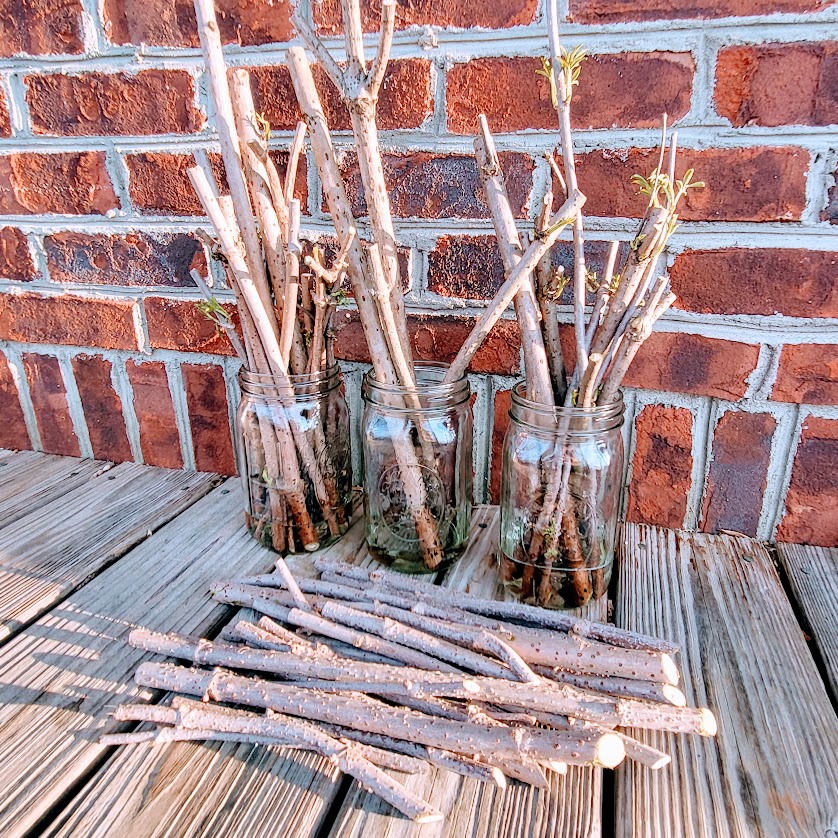Easy and Amazing Elderberries: A Plant for Everyone’s Home
When we moved to Tennessee, I had no idea what an elderberry was. We received an elderberry cutting from an arbor day event and I looked them up and saw they were edibile and beneficial. After that, we started seeing elderberry products sold everywhere and my interest was piqued. When I had an aopportunity to attend an elderberry course with Terry Durham from River Hills Harvest to learn all about growing elderberries, I jumped at the opportunity to learn more about this amazing fruit.
What are Elderberries?
Elderberries are native to America and can often be found in ditches along roadways and along streams. These medium to large shrubs can be identified by their white flowers in June. Elderberries have long been known for their medicinal properties. In addition to being high in antioxidants, they work as an anti-inflammatory, anti-virus, and lower cholesterol, just to mention a few. Research is now being done to see their effects on preventing and reversing cognitive degeneration in Alzheimer’s patients. With all of these benefits, who wouldn’t want to grow their own elderberries?
As part of my participation in the course, I received cuttings from “Bob Gordon” elderberries off of Terry Durham’s farm. We then traveled to a local farm where we participated hands on in the planting and pruning of elderberries. I was able to make additional cuttings from the canes we pruned.
Planting Elderberries
Plant the cuttings directly into the soil (no need to establish them in water or in pots). For our area, it was recommended to plant the cuttings between the middle of February and the middle of March (growing zone 7). They can be planted as close as 2 feet together, especially if you want to create a solid wall (or fedge) of elderberries. They enjoy well drained soil with a lot of irrigation.
The planting directions we were given were:
- Mow grass real low
- Till the soil
- Till in dried chicken manure
- Cover with landscape fabric and secure with staples
- Tuck ends under (make sure the ends are melted to prevent fraying)
- Mark holes every 2 ft down the center
- Burn holes – don’t cut! (Can use weed flame or a propane torch)
- Stick cutting in on a slight angle. (make sure the first pair of leaf buds are in the soil)
- Mulch around cutting so weeds don’t come up through the hole
- Irrigation on top – use orchard hose






What I did was:
- Choose old cow paths that have little to no vegetation
- Use a broadfork to loosen the soil
- Top with rabbit manure
- Cover with landscape fabric and secure with staples
- Burn holes every 2 feet down the center of the landscape fabric with James’ propane torch (he had to show me how to use it first!)
- Have my daughters stick the cuttings in
- Go behind my daughters and make sure the cuttings were put in right side up and are deep enough
- Hope that it rains soon because we have had some below freezing nights and I’m not ready to put out the hoses quite yet.
While my method was different, it is not because I think I know better. Moreso, it was about making best use of the resources we have available. While we will be thrilled to grow and harvest elderberries, at this time it is not something that we are planning on investing too much into.
Propagating Elderberries
Fortunately, Elderberries are easy to propagate. They can be completely pruned all the way to the ground every year (after their second year) when they are dormant. New canes will grow each year and produce harvestable berries. They can be propagated very easily. The canes that are pruned can be cut into sections that include 2 sets of leaf buds (these cuttings can be stored for 2-3 months in the refrigerator if you are not ready to plant yet). One set of leaf buds will be planted below the soil to become the roots.
Part of the purpose of the class I attended was to help start a group of elderberry growers in our area that could work together to purchase processing equipment. While we have yet to decide if we will pursue elderberries as a farm enterprise, we are very excited to plant all of the cuttings we have and to start experimenting with making a variety of our own products as we look forward to reaping their health benefits.
